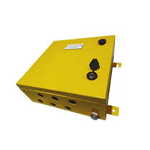Cathodic Protection Anode
- Post author:ayda ahangi
- Post published:February 26, 2024
- Post category:Cathodic Protection
- Post comments:0 Comments

Cathodic Protection Anode is a protective technique used to protect metal structures and equipment from corrosion and rust. This process is based on the principle of cathodic protection of metals. Here is a series of articles on cathodicprotection anodes:
Here is an overview of its functioning:
- Introduction to Cathodic Protection:
- Corrosion is a natural process where metals degrade due to reactions with their environment.
- Operating Principle:
- When a metal acts as a cathode, electrical current passes through it, converting the metal into cations and preventing the corrosion process through electron transfer.
- Installation and Operation:
- Installing anodes on the metal surface and establishing electrical connections to the system require precise steps. Determining suitable points for placing anodes and determining the required current level are crucial details in implementing cathodic protection.
- Applications and Industries:
- Cathodic protection with anodes finds widespread use in industries such as oil and gas, maritime structures, and construction.
- Advantages and Limitations:
- Advantages include high protection efficiency, extended service life for structures, and reduced maintenance costs. However, limitations include initial installation expenses and the need for careful monitoring.
- Emerging Technologies:
- Smart anodes, equipped with sensors and advanced technologies, are emerging to optimize the efficiency of cathodic protection systems and provide better management and control.
Understanding the principles and applications of cathodicprotection anodes is essential for ensuring the durability and integrity of metal structures in various industrial settings.



